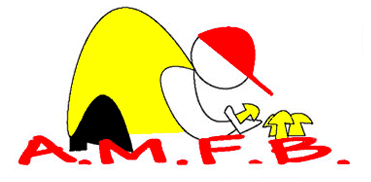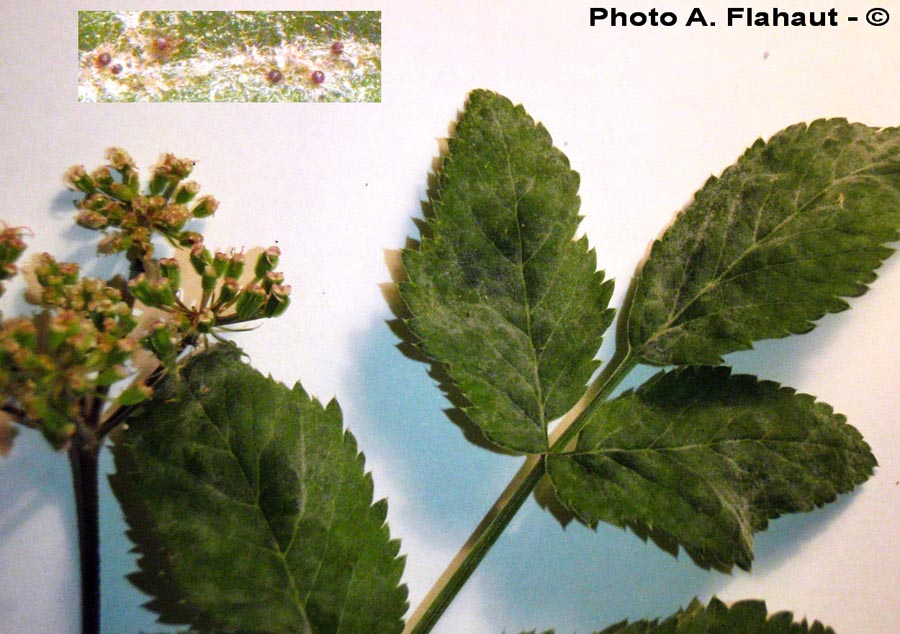Association des Mycologues Francophones de Belgique asbl |
Micromycètes : Oïdiums.
Erysiphe heraclei
(A. Flahaut)
(spores - asques - fulcres)
Cet oïdium s’attaque à la grande berce, ou berce spondyle (Heracleum sphondylium) ; les cléistothèces font en moyenne 0,1 mm de diamètre. Les fulcres sont nombreux, mais sans terminaisons remarquables.
Il a également été trouvé sur la podagraire, ou herbe aux goutteux (Aegopodium podagraria), le céleri (Apium graveolens), l'angélique (Angelica sylvestris).
